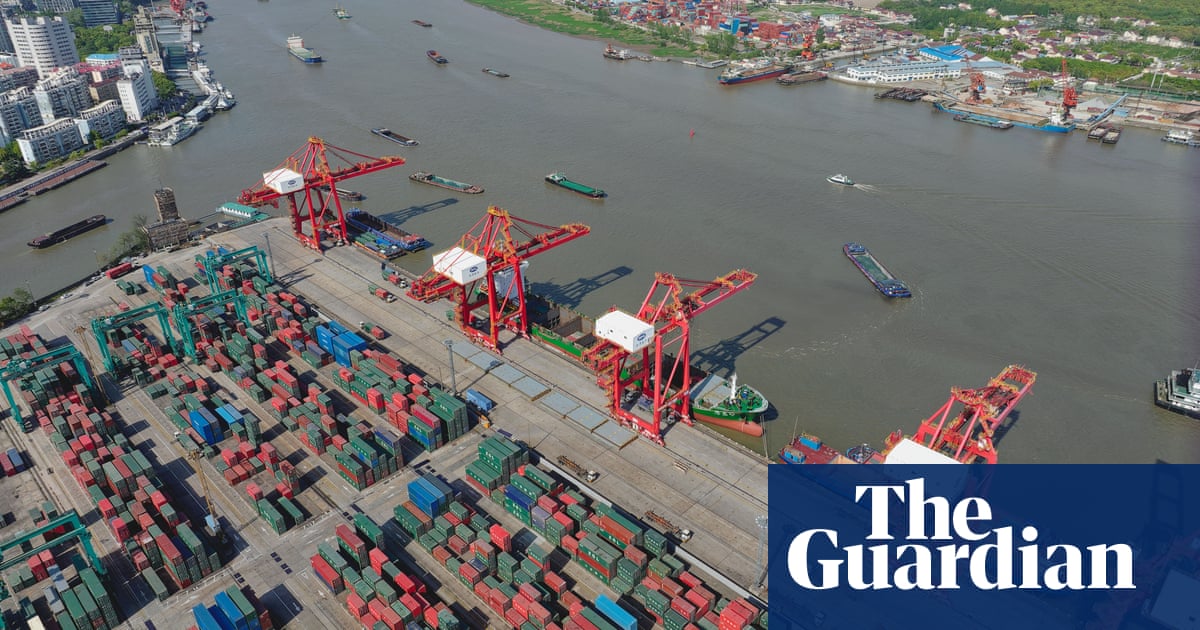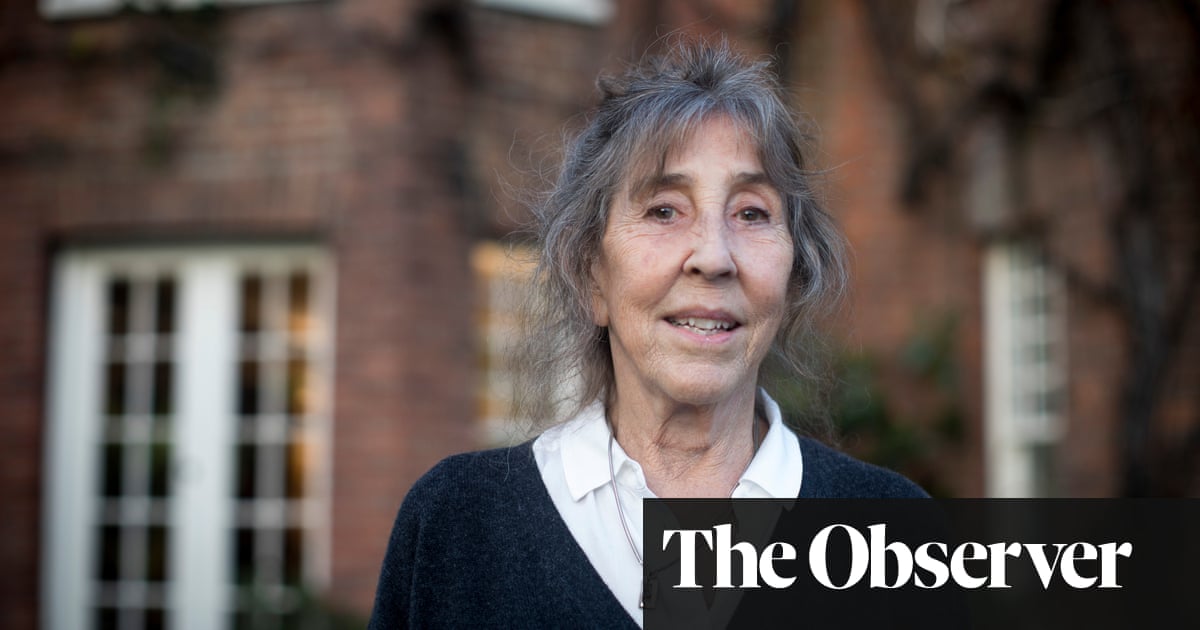Although activity is high, it is surprisingly quiet inside the construction site of a high school extension in Sickla, a former industrial area in south Stockholm that is set to become part of the “largest mass timber project in the world” according to the Swedish urban property developer Atrium Ljungberg.
Just a few months remain until students enter the premises, but there is no sound of drilling or pounding against concrete walls. The scent of wood is unmistakable, and signs of the material can be spotted everywhere – from glulam (glued laminated timber) columns and beams in the building’s frame to cross-laminated timber (CLT) slabs in the floors, ceilings and staircases. CLT, made by gluing together layers of planed wood into panels, offers strength and rigidity comparable to concrete but is significantly lighter and quicker to build with.
“It’s a fantastic working environment – no concrete dust, no silica dust issues. It’s clean and quiet,” said Niklas Häggström, the project area manager at Atrium Ljungberg, and responsible for the realisation of the entire Wood City project, when we walk around the site. In total, 25 neighbourhoods will cover 25 hectares. The first buildings are scheduled for completion in 2025, with the next phase – including 2,000 homes – planned for 2027. It is an enormous project, but with timber Atrium Ljungberg can build 1,000 sq metres a week. With concrete, it manages half that.

In 2022 Atrium Ljungberg set an ambitious goal to become climate neutral by 2030. Just by choosing timber as the structural material, the company has said it reduces its climate impact by about 40%, a claim backed up by researchers at Linköping University. And that is before factoring in energy systems and reuse strategies. One goal, for example, is to reuse 20% of materials in tenant adaptations, refurbishments and new-builds. According to Angela Berg, its business area director, shifting from concrete to timber is not just a technical change – it is a mindset shift. “It shapes the whole city experience: from the facade materials to the greenery, to how people interact with their environment. It’s not about entering a building and seeing wood, it’s about feeling the difference everywhere,” she said.
If other companies were to follow suit, one study found that building with wood instead of concrete and steel in 80% of new buildings would help offset half of Europe’s construction industry emissions. Another study found that wooden buildings continue to be climate friendly – a four-storey wooden building results in a net uptake of 150 tonnes of carbon dioxide. This is possible because the wood stores the CO2 absorbed by the growing trees. (The analysis takes into account the energy used in wood production, transport and the construction of the building.)
While each building will have a different character, wood will permeate the city inside and out, said Oskar Norelius, an architect at White Arkitektur who has worked with Atrium Ljungberg on the project. “It shouldn’t be something you discover only when you walk in. The timber should be part of the experience from the street.”
The hope is that the city will also improve the wellbeing of the people inside the buildings. “Wood regulates indoor humidity, creating a naturally comfortable climate throughout the year. Beyond that, studies show that visible timber has psychological benefits – it reduces stress, helps children concentrate better, and even supports faster recovery in patients. These effects carry over into offices and homes too.”

Norelius recently worked on Sara cultural centre in Skellefteå, which is the Nordic region’s tallest timber building to date with 20 storeys, putting the city on the map as a global pioneer. “While other countries often have the knowledge, they haven’t implemented it at scale like Sweden has,” he said. The fact that 70% of the country is covered in woodland has supported a long tradition of building in wood.
Before 1994 Swedish building codes restricted the use of wood in buildings over two storeys, mainly due to fire safety concerns. But when the country revised its building regulations, materials were no longer explicitly banned; instead buildings had to meet functional demands for fire safety, structural stability and sound insulation. Wood could now be used in multi-storey buildings if they met safety standards. It also led to the increased use and further development of engineered wood products such as CLT and glulam.
In recent years, other Scandinavian countries have followed suit, including Wood City in the Jätkäsaari district of Helsinki, which consist of a series of multi-storey buildings completed in 2021, and the 18-storey Mjøstårnet in Brumunddal, Norway, which is the country’s third-tallest building, finished in 2019. Other examples around the world include Gaia, a wooden campus in Singapore that opened in 2023, and an eight-storey housing block in Seattle, which opened the same year. In Sydney, Atlassian Headquarters, a wooden retail and office space, claims it will be the “tallest commercial hybrid timber tower in the world” when completed.

But despite the race to build sustainably, there have been conflicting interests between forestry, biodiversity, recreation and climate concerns in Sweden in recent years. While some argue the country should not harvest forests at all, others believe that managed forestry is beneficial for carbon capture. “Over time, it leads to more growth and more carbon stored,” said Erik Serrano, a professor in structural mechanics at Lund University. “If you can meet the same technical requirements of load-bearing, fire safety, moisture, acoustics, then wood has a clear advantage because it comes from a natural cycle. It’s a zero-sum game in terms of carbon dioxide over its lifecycle. What’s important is that we use wood for long-lived products as much as possible. If we store carbon in buildings for 100 or 200 years, we delay emissions significantly – that’s a major effect.”
In Sickla, Häggström stops by a window facing the Marcusplatsen square, and describes how Wood City will be self-sufficient on electricity thanks to a geothermal energy system. There are two birch trees right outside the window that have been left untouched – a seemingly mundane detail – but Häggström explains that it is part of a larger strategy.
“We had the option to remove the trees and plant new ones, but we chose to keep them – even though it cost us an extra £20,000,” he said. “We felt the existing trees were part of the place’s identity. It’s not just about building sustainably – it’s about creating a place people want to be in.” By building in timber and showing the reduced carbon impact, he believes pressure is put on the concrete industry to innovate. “They see the carbon numbers, they see what’s possible, and they have to respond. And that’s a good thing. This project isn’t just a school – it’s part of pushing the whole sector forward.”

 8 hours ago
7
8 hours ago
7













































